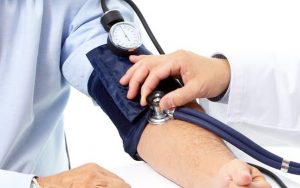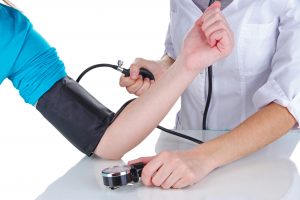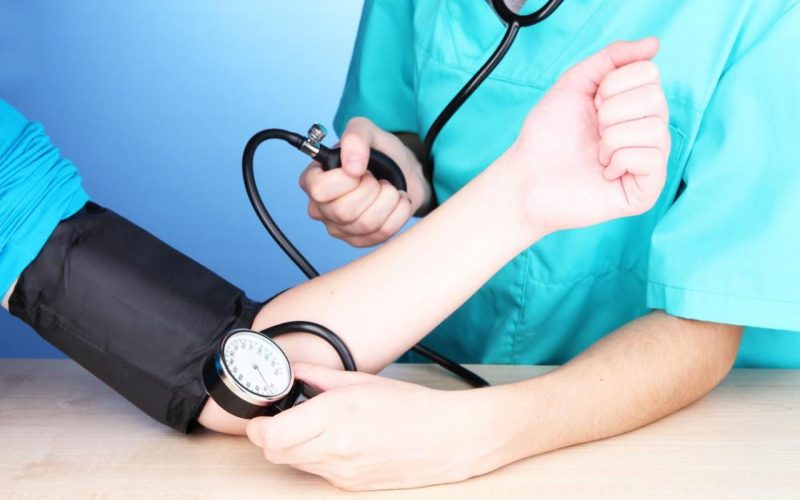Hypertension often develops imperceptibly for a person, at first manifesting themselves as general symptoms, which are usually regarded as a reaction of the body to changes in the weather or signs of fatigue and lack of sleep. At the same time, high blood pressure is quite harmful to health and is directly related to such dangerous pathologies as myocardial infarction and stroke.
Causes of the disease
Arterial hypertension is a violation of the cardiovascular system, characterized by an increase in systolic blood pressure (the first digit on the tonometer) above 140 mm Hg. Art. and / or diastolic (second digit) – above 90 mm Hg. Art. It can arise as an independent disease or be the result of another pathology.
The most common is hypertension or essential hypertension, which develops on its own, for no apparent reason. It occurs in 90% of patients with high blood pressure.1
Secondary or symptomatic hypertension is directly related to other diseases or factors that can be influenced.1 This form of the disease is usually suspected in young people under 30 years of age with high blood pressure.
The main causes of secondary arterial hypertension are2:
Obstructive sleep apnea syndrome.
Kidney disease.
Adrenal neoplasms – pheochromocytoma.
Thyroid pathologies: thyrotoxicosis, hypothyroidism.
Congenital malformations of the heart and blood vessels, including coarctation of the aorta.
Primary hyperaldosteronism.
Itsenko-Cushing’s syndrome.
Side effects of medications such as oral contraceptives, non-steroidal anti-inflammatory drugs, antiviral drugs.
Risk factors
There are a number of factors that increase the likelihood of developing hypertension. The most significant are:
Age. The risk of high blood pressure increases with age, mainly after age 65.
Hereditary tendency to arterial hypertension.
Overweight.
Physical inactivity, lack of physical activity.
Smoking, including passive smoking.
Excess salt and potassium-containing foods in the diet.
Alcohol abuse.
Chronic stress, frequent emotional stress and lack of sleep.
Pregnancy.
Early menopause.
Heart rate exceeding 80 bpm at rest.
How do the degrees of hypertension differ?
Normal blood pressure is considered to be from 110/70 to 130/85 mm Hg. Art., which on average is well-known 120/80 mm Hg. Art. With arterial hypertension, the systolic blood pressure rises above 140 mm Hg. Art. and / or diastolic above 90 mm Hg. Art.
The degree of hypertension is determined depending on the indicators of systolic (SBP) and / or diastolic (DBP) blood pressure (Fig. 1).
As a rule, at the first stage of the development of hypertension, there are still no serious structural changes in the internal organs and structures of the body.
If hypertension develops, over time, excessive blood pressure on the walls of the arteries will adversely affect both the blood vessels themselves and the target organs: the brain, retina, heart. The higher the pressure and the longer it remains uncontrollable, the greater the potential threat of decreased visual acuity, deterioration of cognitive abilities, the appearance of pain in the heart, etc.
The most significant complications of arterial hypertension are:
Myocardial infarction.
Heart failure.
Loss of visual acuity and blindness.
Stroke.
Dementia
Hypertensive crisis is a complication of arterial hypertension in which blood pressure suddenly rises to 180/120 mm Hg. Art. and more. In this case, direct damage to the target organs occurs. This condition requires urgent medical attention in a hospital setting.
Differences between degrees and stages of hypertension
In clinical practice, several classifications of arterial hypertension are used simultaneously. The division of this pathology according to the degrees and stages of development is of key importance.1
If the degree is determined depending on the parameters of pressure, then the stage of the disease depends on the severity of the damage to the target organs and the presence of clinical conditions associated with high blood pressure, diabetes mellitus and chronic kidney disease. There are 3 stages of arterial hypertension:
Stage I. There are no target organ lesions and associated clinical conditions, but there are associated risk factors. In addition to those previously mentioned, this also includes a number of laboratory indicators: levels of lipids and blood sugar, uric acid and others.
Stage II. There is asymptomatic target organ damage as determined by additional examination and / or stage 3 chronic kidney disease and / or concomitant uncomplicated diabetes mellitus.
Stage III. The presence of manifest target organ lesions and hypertension-related clinical conditions, stage 4-5 chronic kidney disease or complicated diabetes mellitus.
Symptoms of grade 1 hypertension
Clinical manifestations of grade 1 arterial hypertension often go unnoticed or are absent altogether, since the body’s compensatory capabilities offset a slight increase in blood pressure.3 Because of this, the disease is often called a “silent killer”.
With long-term preservation of high blood pressure indicators, nonspecific symptoms may appear, including:
Throbbing or pressing headache with epicenter in occipital region.
Tinnitus and dizziness.
Flashing “flies” before the eyes.
Increased and rapid heartbeat.
Nosebleeds.
Poor exercise tolerance and shortness of breath.
Swelling of the lower extremities, numbness in the legs.
When should you see a doctor?
In most cases, the detection of arterial hypertension occurs during a routine examination or seeking medical help for another disease or condition. Therefore, in the presence of risk factors, regular visits to the family doctor or local therapist are recommended.
An unscheduled consultation or appeal to the emergency medical service is required in the following situations:
Decrease in the effectiveness of drugs taken – a situation where previously effective antihypertensive drugs have stopped working.
Increased blood pressure during treatment.
The emergence of side effects from ongoing drug therapy.
Deterioration of the general condition while maintaining the current blood pressure figures.
A sharp rise in blood pressure to more than 180/120 mm Hg. Art., that is, the development of a hypertensive crisis.
Sudden decrease in systolic or diastolic blood pressure https://en.wikipedia.org/wiki/Blood_pressure by 30 mm Hg. Art. and more.
